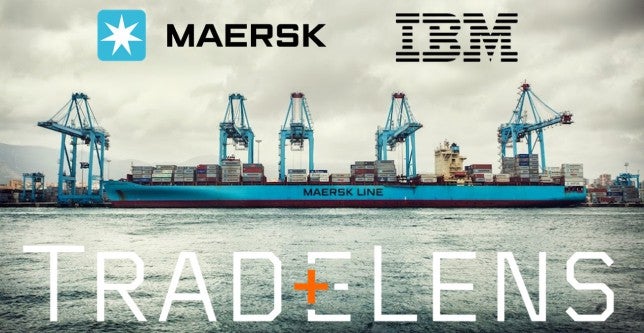Analyst at Drewry believes the decision by CMA CGM and MSC to join the IBM-Maersk digital shipping platform is a significant event.
On Tuesday, it was announced that two of the largest container carriers, CMA CGM and Mediterranean Shipping Company (MSC), will join TradeLens, a “blockchain-enabled” digital shipping platform jointly developed by A.P. Møller – Maersk and IBM. Other container carriers such as Seaboard Marine, ZIM, PIL, KMTC and Namsung also are users of TradeLens.
In total, there are more than 100 organizations, including terminals, port authorities, logistics companies, railroads, trucking companies, beneficial cargo owners and customs agencies, using or testing the platform.
American Shipper posed several questions about TradeLens and the Digital Container Shipping Association to Drewry Supply Chain Advisors. (DCSA is a nonprofit group formed early this year through which carriers can discuss information technology standards. It recently filed an agreement with the FMC setting forth plans to expand its membership from five to nine members.)
Philippe Salles, head of e-business, transport and supply chain, offered these responses to questions from American Shipper.
Q: Do you consider the announcement about CMA CGM and MSC joining TradeLens to be significant?
A: Yes, especially knowing the market understood CMA CGM and MSC were not previously keen in joining TradeLens due to the predominance of Maersk and IBM. In November 2018, CMA CGM, Asian carriers, terminals and CargoSmart launched GSBN (Global Shipping Business Network), which is seen as a similar consortium. So there may have been arrangements and changes which may have encouraged both shipping lines to join at the same time.
Q: Is this something that will raise regulatory scrutiny?
A: Like any large carriers-joined operations, it will certainly raise regulatory scrutiny. What are the data being shared? What is the data governance and degree of neutrality, privacy and security? What is the business model? How open is the consortium? What are the benefits for the users and does it impact competition? It can actually be a good thing that the regulators “approve” the platform as it will remove doubts and provide confidence for the participants and users.
Q: Is this related to the formation of the Digital Container Shipping Association?
A: It is related to DCSA as both initiatives result from the same principle: Work together on technology to avoid silos, improve the data flows and quality, improve trust in data, improve standards and remove costs from reinventing “the wheels” each time. DCSA has clearly stated they will not operate a platform. They are just focused on technology standards (i.e. message format, data models, semantics) applied to container shipping, promoting current and future standards as technology evolves. It is different from the foundation of INTTRA in the 2000s which aimed at doing both: to promote operational standards and operate a platform. TradeLens will certainly apply IT (blockchain) standards promoted by DCSA. TradeLens will not be the only platform. Carriers like CMA CGM are also participating in GSBN. Interoperability standards between platforms will be essential, which the regulator may look at.
Q: Is TradeLens something that many shippers want? In Tuesday’s announcement, a Procter & Gamble executive was quoted, but are many shippers enthusiastically embracing blockchain?
A: Shippers want results in terms of shipping reliability, cost efficiency and free competition. P&G certainly represents the large BCO segment. There may be questions on how small and medium accounts will fit and how forwarders (especially large ones) will operate through TradeLens. Carriers like Maersk and CMA CGM have clearly moved into integrated logistics. The position of large 3PLs will be key as they participate in various blockchain initiatives as well.
Shippers may have additional expectations beyond transport execution. Customs digitization and access to trade finance is key for the shippers. They may expect TradeLens to quickly enable the data and document flow beyond the carriers scope and operate digital documents through the banking and insurance network.
The role of ports and customs will also be important.
Q: Is TradeLens something that will save carriers money and make them more profitable?
A: It will certainly save IT cost trying to develop their own standards and platforms, doing numeric proof of concept and building the network scale to make the blockchain concept work. Profitability of carriers is not only linked to technology. However, it may create a technology divide between those who can support higher technology standards and those who can’t. Catching up on technology may be costly for some logistics operators and carriers
Q: Are carriers interested in TradeLens for some other reason such as better cybersecurity?
A: Cybersecurity is key. There may be also a practical vision: Avoid getting involved in blockchain initiatives without making them happen. They will concentrate their effort to bring reality to what many still consider a long-term technology. There may be another strategic vision. If carriers are not making such a platform happen, other tech giants may do it.










